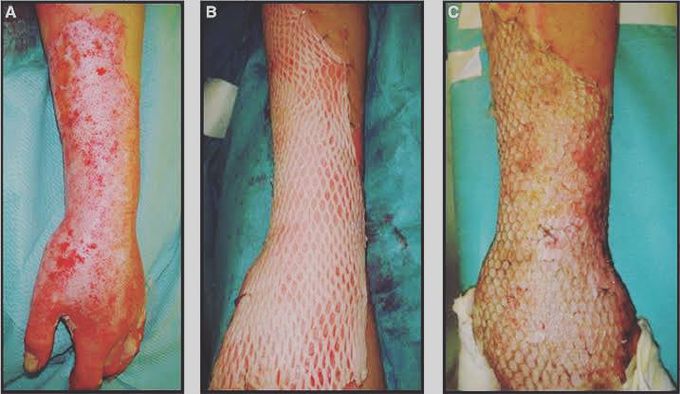


Boby burn by fire
Burn Treatment & Prevention Tips There are l different causes of serious burns in children, including sunburn, hot water or other hot liquids, and those due to fire, electrical contact, or chemicals. All of these can cause permanent injury and scarring to the skin. Immediate Treatment Steps for Burns: As quickly as possible, soak the burn in cool water. Don't hesitate to run cool water over the burn long enough to cool the area and relieve the pain immediately after the injury. Do not use ice on a burn. It may delay healing. Also, do not rub a burn; it can increase blistering. Cool any smoldering clothing immediately by soaking with water, then remove any clothing from the burned area unless it is stuck firmly to the skin. In that case, cut away as much clothing as possible. If the injured area is not oozing, cover the burn with a sterile gauze pad or a clean, dry cloth. If the burn is oozing, cover it lightly with sterile gauze if available and immediately seek medical attention. If sterile gauze is not available, cover burns with a clean sheet or towel. Do not put butter, grease, or powder on a burn. All of these so-called home remedies actually can make the injury worse. For anything more serious than a superficial burn, or if redness and pain continue for more than a few hours, consult a physician. All electrical burns and burns of the hands, mouth, or genitals should receive immediate medical attention. Chemicals that cause burns also may be absorbed through the skin and cause other symptoms. If your pediatrician thinks the burn is not too serious, he or she may show you how to clean and care for it at home using medicated ointments and dressings. When treating a burn at home, watch for any increase in redness or swelling or the development of a bad odor or discharge. These can be signs of infection, which will require medical attention. Under the following circumstances, hospitalization may be necessary: If the burns are third degree. If 10% or more of the body is burned. If the burn involves the face, hands, feet, or genitals, or involves a moving joint. If the child is very young or fussy, and therefore too difficult

